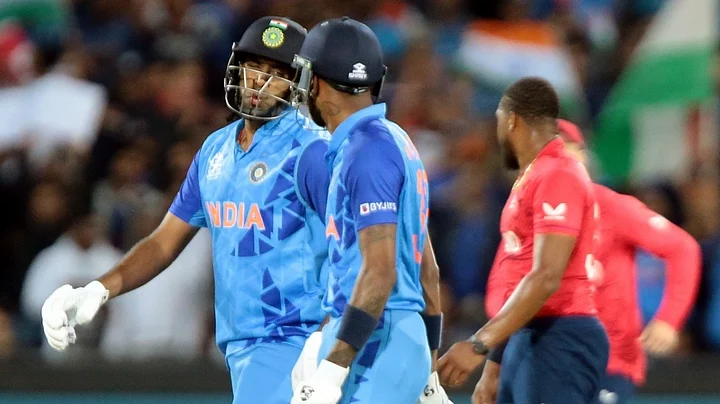India suffered a disappointing ten-wicket defeat to England in the semifinal of the ICC Men's T20 World Cup 2022 and there were certain decisive factors - timid batting approach in powerplay, no penetration with new ball - which resulted in Rohit Sharma-led side's exit from the mega event in Australia.
When two batters of the calibre of Jos Buttler and Alex Hales get going it's hard for any team to stop and the two produced their best performances in the semi-final.
England openers Buttler (80 not out from 49 balls) and Hales (86 not out from 47) made a chase of 169 look like a walk in the park in the semifinal of the T20 World Cup , powering their team to the final with a convincing 10-wicket win over India.
However, it shouldn't prevent India from reflecting on how their own display contributed to the nature of the loss.
A look at the few reasons for India's dismal show in the semifinal:
Timid Batting Approach in Powerplay
A total of 168/6 in a World Cup semi-final is a competitive score. But it's not a great one, particularly not on a decent batting surface like the Adelaide Oval and against a team with the firepower of England.
The fact that the total was a par score of 168 even with power-hitter Hardik Pandya producing fireworks with a brilliant 63 from 33 balls at the death, suggests that there was a problem of intent.
The stark contrast in the game came during the respective Power Plays, where the difference in intent couldn't have been clearer.
Losing KL Rahul for five early on was a setback, but even so, India went at only fractionally over a run-a-ball during that period of fielding restrictions, with neither Virat Kohli or Rohit Sharma finding fluency as they reached 38/1 after six.
On the other hand, England's openers approached things completely differently, attacking from the off to get their side ahead of the game, scoring at more than ten-an-over throughout the powerplay.
No Penetration With New Ball
The struggles with the bat put India in difficulty. And yet the total was sufficiently high that some early breakthroughs would have placed England under big pressure. However, the breakthroughs didn't come for India and the captain pointed his finger primarily at a lack of execution from the bowlers.
"The way we started with the ball was not ideal. We were a little nervous. When Bhuvi bowled the first over it swung today, but not from the right areas,'' said Rohit.
"We wanted to keep it tight, not give room, because the square of the wicket was an area we were aware of - that's where the runs came today. If we keep it tight and the batsman still scores runs, we'll take it. But we didn't do that today,'' he added.
Lack of a Strike Bowler
Taking wickets in the powerplay through the movement of Arshdeep Singh and Bhuvneshwar Kumar has been India's Plan A during the tournament, using spin and bowling into the pitch to soak up the middle overs and then executing plans at the death.
It's a decent strategy and strikingly similar to that of semi-final opponents England. But when early wickets don't come, both attacks can look a little toothless at times.
That was certainly the case for India on Thursday, with the absence of the injured Jasprit Bumrah keenly felt. When India needed a cutting edge there didn't seem like a banker of an option that the captain could use.
Four of India's bowlers went at more than ten-an-over - Kumar, Mohammed Shami, Ravichandran Ashwin and Pandya - with Axar Patel being milked for 30 harmless runs from his four overs and Arshdeep also failing to keep it tight.
(At The Quint, we question everything. Play an active role in shaping our journalism by becoming a member today.)
